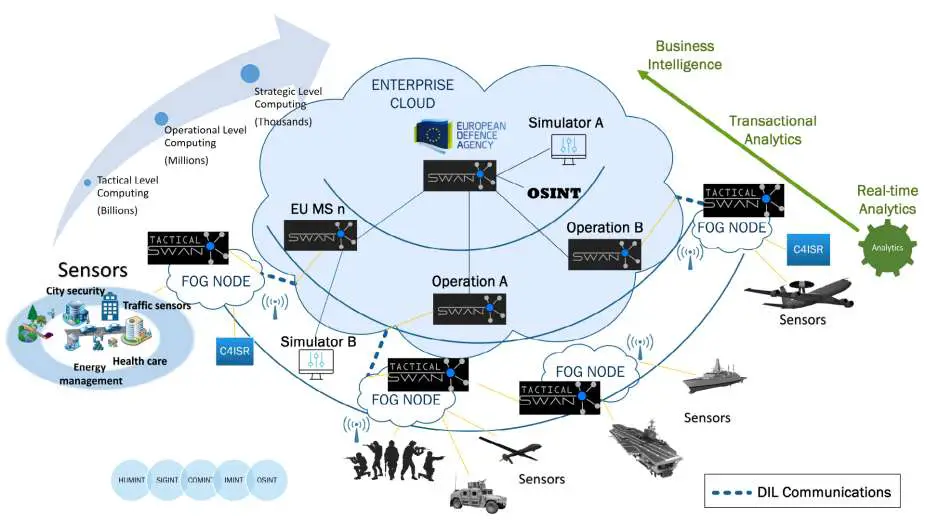Combat cloud: European Defence Agency study shows benefits of cloud computing for EU militaries
Across land, sea, air, space and cyber, military operations increasingly rely on data. That makes access to cloud technologies essential. A European Defence Agency-financed study has concluded that cloud computing can be applied to defence, both at the strategic level and in the field, to help European armed forces achieve information superiority against an adversary.
Follow Army Recognition on Google News at this link

CLAUDIA, a European Defence Agency-financed study, has concluded that cloud computing can be applied to defence, both at the strategic level and in the field, to help European armed forces achieve information superiority against an adversary (Picture source: EDA)
The EDA study carried on over four years ‘‘Cloud Intelligence for Decision Support and Analysis’’ (CLAUDIA) looked at the application of civilian cloud technologies in defence, including computing capabilities, data storage and software tools hosted externally. Results of the study were presented on January 25th, to follow-up activities looking at constraints to cloud computing in defence.
Given the pressures of the battlefield, such as relying on a range of connections from satellites to radios in an extreme environment, EDA’s research is crucial to increasing situational awareness and shortening reaction times across multiple domains.
As cloud technology uses virtualisation − creating a virtual version of servers, storage devices and networks using software − the study focused on the overall advantages for defence. These are simplicity, flexibility and the ability to scale up in military environments, as well as working with ‘big data’ supported by artificial intelligence (AI) tools. These advantages can significantly improve the situational awareness and decision-making process both at the strategic and tactical levels.
CLAUDIA’s objective was to research using cloud technologies to support analysis of hybrid warfare including:
* Management and processing of information from heterogeneous sources
* Tactical cloud infrastructure for Command, Control, Communications, Computers (C4) Intelligence, Surveillance and Reconnaissance (ISR) − or C4ISR − systems
* Information-process enhancement by using AI and big data
* Joint strategic, operational and tactical level simulators
* Simulation as a Service (SaaS) for computer simulations of theatres of war (synthetic environments) and rapid scenario generation
Thanks to CLAUDIA, a Software Analysis (SWAN) platform has been developed to demonstrate the cloud-based capabilities, with different modules to address the different technology topics, including:
* Open Source Intelligence (OSINT) Analysis at the strategic level
* Tactical Cloud
* Internet of Military Things
* 5G for Tactical Cloud and AI in Wargaming
The demonstration showcased the benefits of cloud technologies with the SWAN platform at both the strategic and tactical levels. Edge computing – at or near the location of either the user or the data source – was also introduced to demonstrate the benefits of using such technologies in the field, providing real-time situational awareness with enhanced data and visual capabilities. The demonstration included simulation and wargaming for a hybrid warfare scenario, with the use of wargaming and advanced training and exercise capabilities. The study recommended making the SWAN platform available to all Member States for further testing.

Given the pressures of the battlefield, such as relying on a range of connections from satellites to radios in an extreme environment, EDA’s research is crucial to increasing situational awareness and shortening reaction times across multiple domains (Picture source: EDA)
Defense News January 2024
- Hits: 2152
















